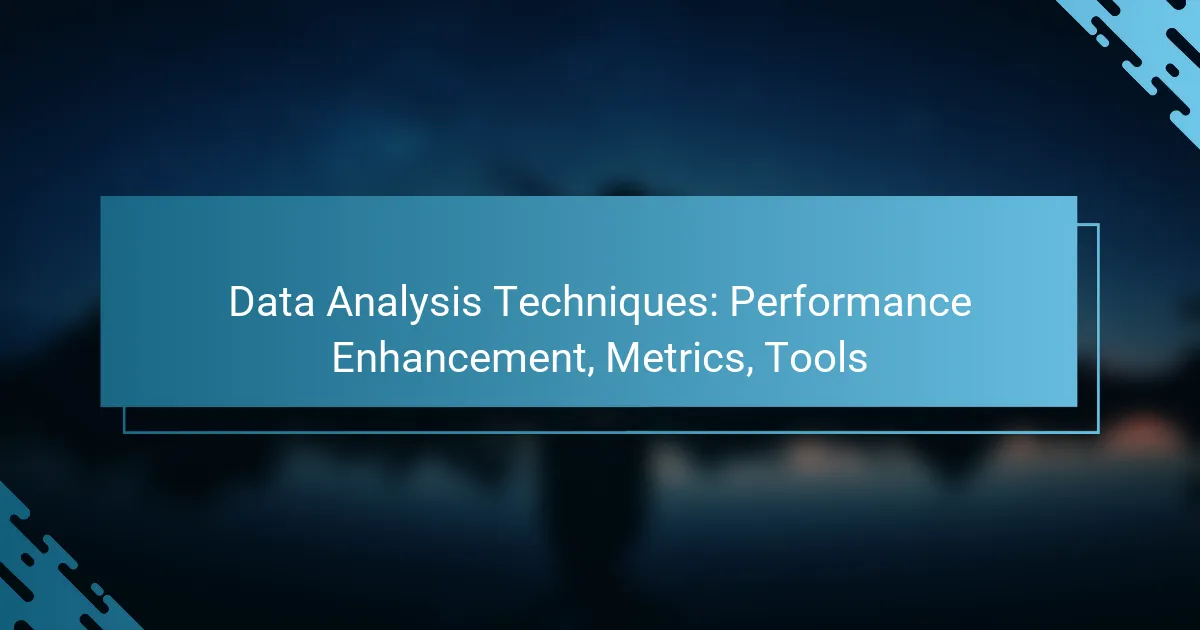Data analysis techniques are vital for enhancing performance and making informed decisions in any organization. By employing methods such as descriptive, predictive, and real-time analysis, businesses can optimize operations and improve efficiency. Additionally, metrics provide essential insights that help track progress and identify areas for improvement, while the right tools streamline the analysis process and support effective data visualization and reporting.
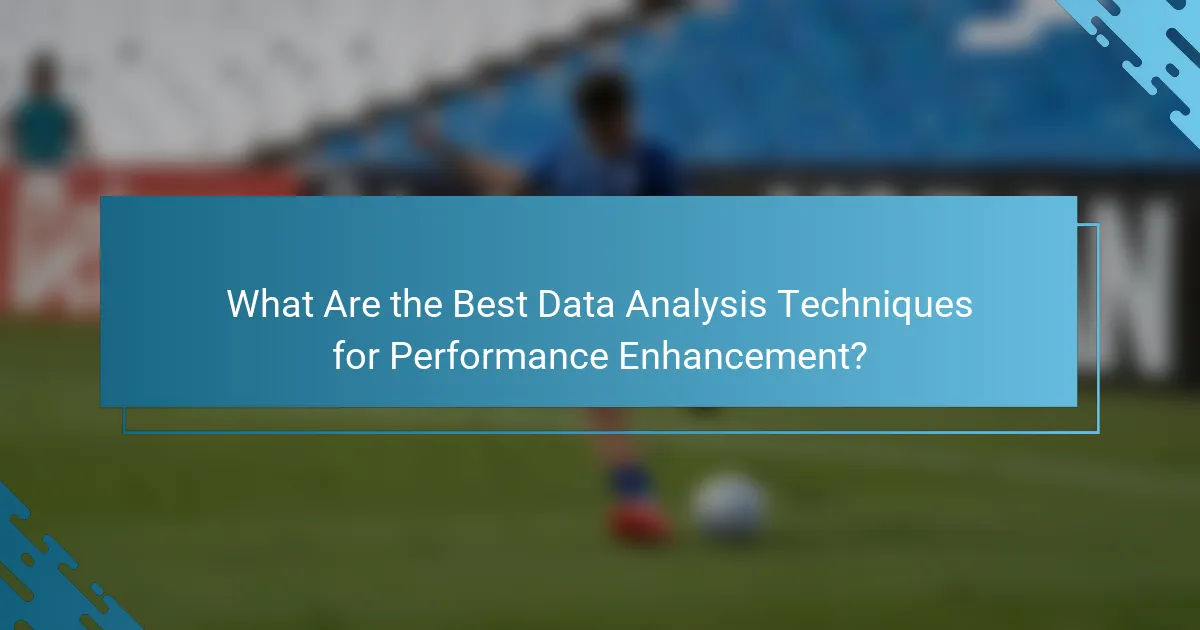
What Are the Best Data Analysis Techniques for Performance Enhancement?
The best data analysis techniques for performance enhancement include descriptive, predictive, prescriptive, diagnostic, and real-time analysis. Each technique serves a unique purpose and can significantly improve decision-making and operational efficiency when applied correctly.
Descriptive Analysis
Descriptive analysis focuses on summarizing historical data to identify trends and patterns. It typically involves statistical measures such as mean, median, and mode, which help in understanding the data’s central tendencies and variability.
Common tools for descriptive analysis include Excel, Tableau, and Google Data Studio. For instance, a retail business might use descriptive analysis to evaluate sales performance over the past year, identifying peak sales months and average transaction values.
Predictive Analysis
Predictive analysis uses historical data to forecast future outcomes. By employing statistical algorithms and machine learning techniques, organizations can predict trends and behaviors, allowing for proactive decision-making.
For example, a bank might use predictive analysis to assess the likelihood of loan defaults based on customer credit history. Tools like SAS, R, and Python libraries are often utilized for building predictive models.
Prescriptive Analysis
Prescriptive analysis goes a step further by recommending actions based on predictive insights. It combines data analysis with optimization techniques to suggest the best course of action for achieving desired outcomes.
Businesses can apply prescriptive analysis in supply chain management to optimize inventory levels and reduce costs. Software like IBM Watson and Oracle Analytics can aid in developing prescriptive models that guide strategic decisions.
Diagnostic Analysis
Diagnostic analysis seeks to understand the reasons behind past performance by examining data anomalies and correlations. This technique helps identify the root causes of issues, enabling organizations to address them effectively.
For instance, if a company experiences a sudden drop in sales, diagnostic analysis can reveal whether it was due to market changes, pricing strategies, or customer dissatisfaction. Tools such as Power BI and QlikView are commonly used for this type of analysis.
Real-time Analysis
Real-time analysis involves processing data as it is generated, allowing organizations to make immediate decisions. This technique is crucial for environments where timely information is vital, such as financial trading or emergency response.
Examples include monitoring website traffic to optimize user experience or analyzing social media sentiment during a product launch. Technologies like Apache Kafka and AWS Kinesis facilitate real-time data processing and analysis.
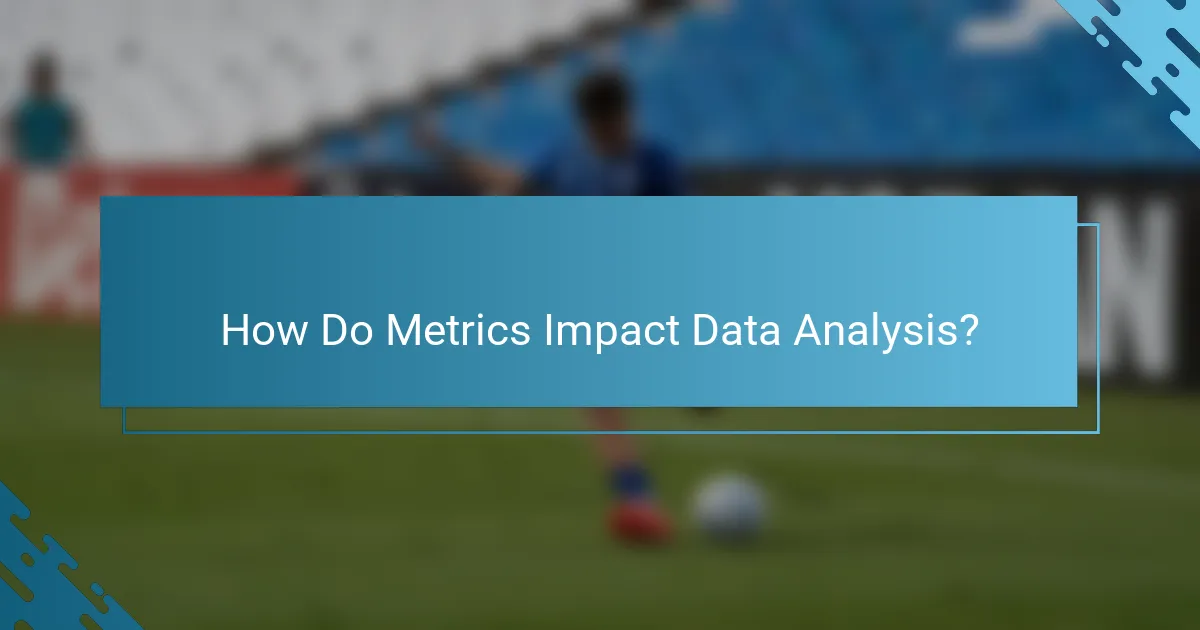
How Do Metrics Impact Data Analysis?
Metrics play a crucial role in data analysis by providing measurable values that help assess performance and guide decision-making. They enable organizations to track progress, identify areas for improvement, and evaluate the effectiveness of strategies.
Key Performance Indicators (KPIs)
Key Performance Indicators (KPIs) are specific metrics used to evaluate the success of an organization in achieving its objectives. They should be aligned with strategic goals and can vary widely across industries. Common KPIs include sales growth, customer satisfaction scores, and operational efficiency ratios.
When selecting KPIs, ensure they are measurable, relevant, and actionable. For example, a retail business might track the conversion rate of website visitors to buyers, while a service provider may focus on customer retention rates. Regularly reviewing KPIs helps maintain focus and drive improvements.
Return on Investment (ROI)
Return on Investment (ROI) measures the profitability of an investment relative to its cost. It is calculated by dividing the net profit from the investment by the initial cost, expressed as a percentage. A positive ROI indicates that the investment has generated more value than it cost.
To effectively use ROI in data analysis, consider both direct and indirect benefits. For instance, a marketing campaign might have a direct ROI from increased sales, while also enhancing brand awareness, which could lead to future sales. Regularly evaluate ROI to ensure that resources are allocated efficiently.
Data Quality Metrics
Data Quality Metrics assess the accuracy, completeness, and reliability of data used in analysis. High-quality data is essential for making informed decisions, as poor data can lead to misleading conclusions. Common data quality metrics include accuracy rates, completeness percentages, and consistency checks.
To maintain data quality, implement regular audits and validation processes. For example, a company might set a target of 95% accuracy for customer data entries. Additionally, establish clear data governance policies to ensure that data is collected, stored, and processed consistently across the organization.

Which Tools Are Essential for Data Analysis?
Essential tools for data analysis include software and programming languages that facilitate data visualization, statistical analysis, and reporting. Selecting the right tool depends on your specific needs, such as the complexity of the data, the type of analysis required, and your familiarity with the software.
Tableau
Tableau is a powerful data visualization tool that allows users to create interactive and shareable dashboards. It connects to various data sources and provides a user-friendly interface for exploring data visually.
When using Tableau, consider its strengths in handling large datasets and its ability to generate real-time insights. However, be aware of its licensing costs, which can be significant for larger teams.
Microsoft Power BI
Microsoft Power BI is a business analytics service that provides interactive visualizations and business intelligence capabilities. It integrates seamlessly with other Microsoft products, making it a popular choice for organizations already using Microsoft software.
Power BI is known for its affordability and ease of use, especially for users familiar with Excel. However, its performance can vary based on the complexity of the data models created.
Google Analytics
Google Analytics is a web analytics service that tracks and reports website traffic, providing insights into user behavior. It is essential for businesses looking to optimize their online presence and marketing strategies.
Utilizing Google Analytics effectively requires setting up goals and events to track specific user interactions. While the basic version is free, advanced features are available through Google Analytics 360, which comes at a cost.
R Programming
R is a programming language specifically designed for statistical analysis and data visualization. It offers a wide range of packages for various data analysis tasks, making it a favorite among statisticians and data scientists.
When using R, leverage its extensive libraries for specialized analyses, such as time series or machine learning. However, R has a steeper learning curve compared to some GUI-based tools, which may deter beginners.
Python Libraries
Python is a versatile programming language with numerous libraries tailored for data analysis, including Pandas, NumPy, and Matplotlib. These libraries enable users to manipulate data, perform statistical analysis, and create visualizations efficiently.
For effective data analysis with Python, familiarize yourself with the libraries that best suit your needs. While Python is powerful, ensure you have a solid understanding of programming concepts to maximize its potential.
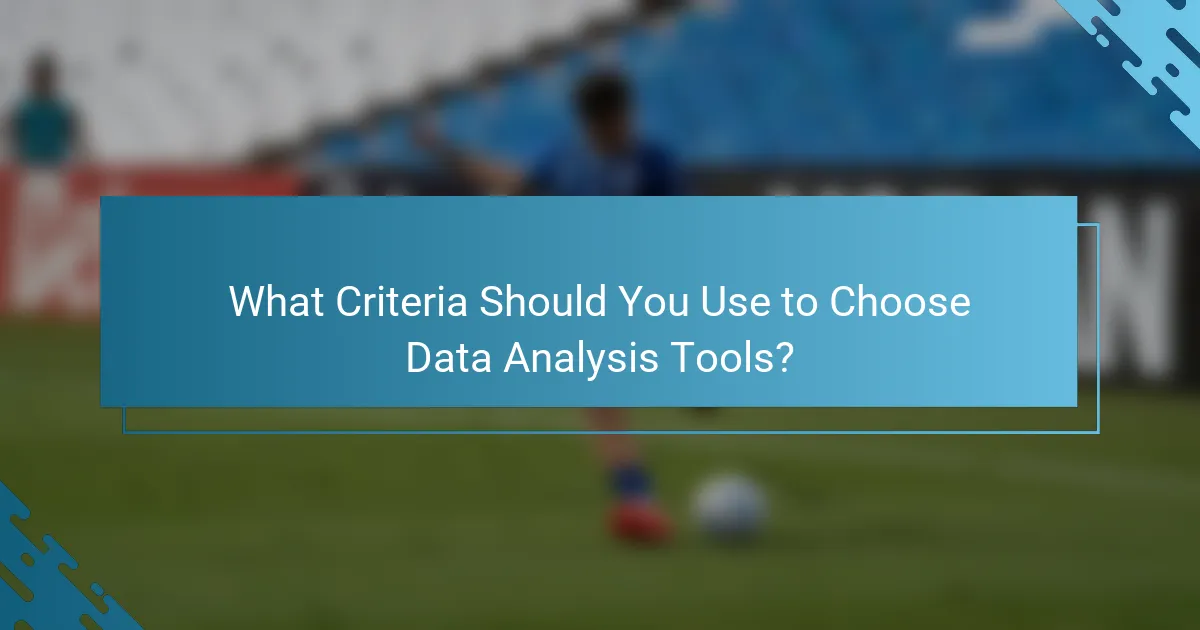
What Criteria Should You Use to Choose Data Analysis Tools?
Selecting data analysis tools requires careful consideration of several criteria, including cost-effectiveness, user-friendliness, and integration capabilities. These factors will help ensure that the tools you choose meet your specific needs while providing value for your investment.
Cost-effectiveness
Cost-effectiveness is a crucial criterion when choosing data analysis tools. Evaluate both the initial purchase price and ongoing costs, such as subscription fees or maintenance expenses. Aim for tools that offer a good balance between functionality and price, ideally falling within a budget that suits your organization’s financial resources.
Consider tools that provide tiered pricing models, allowing you to start with basic features and scale up as your needs grow. This approach can help manage costs while ensuring you have access to necessary capabilities.
User-friendliness
User-friendliness significantly impacts how effectively your team can utilize data analysis tools. Look for intuitive interfaces and clear navigation that minimize the learning curve. Tools that offer comprehensive tutorials or customer support can further enhance usability.
Conduct trials or demos to assess how easily team members can adapt to the software. A user-friendly tool can lead to quicker insights and better adoption rates within your organization.
Integration Capabilities
Integration capabilities determine how well data analysis tools can work with your existing systems and data sources. Choose tools that can seamlessly connect with databases, data warehouses, and other software applications you currently use. This compatibility can streamline workflows and enhance data accuracy.
Evaluate the availability of APIs or built-in connectors that facilitate integration. Tools that support popular platforms and formats will save time and reduce the complexity of data management processes.
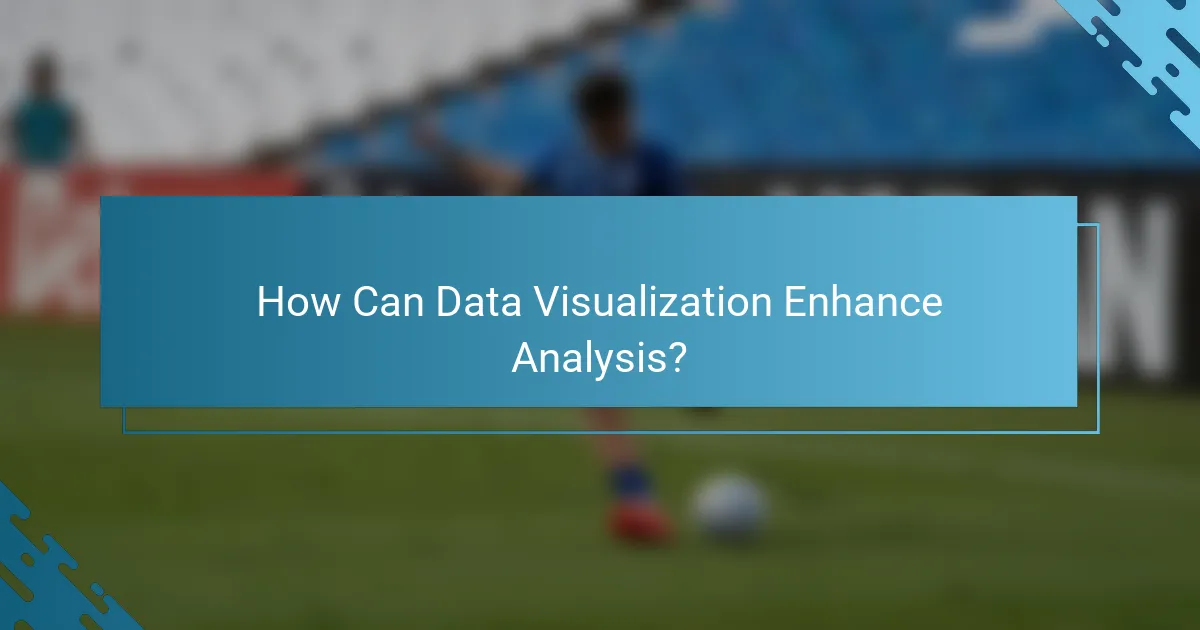
How Can Data Visualization Enhance Analysis?
Data visualization enhances analysis by transforming complex data sets into visual formats that are easier to interpret. This process allows analysts to identify patterns, trends, and outliers quickly, leading to more informed decision-making.
Improved Understanding
Data visualization improves understanding by presenting information in a graphical format that highlights key insights. Visual elements such as charts, graphs, and maps can simplify complex data, making it accessible to a wider audience, including non-technical stakeholders.
When using data visualization, consider the audience’s familiarity with the subject matter. Tailoring visualizations to their level of expertise can significantly enhance comprehension. For example, using a pie chart for percentage distributions may be more effective for general audiences than a detailed statistical report.
To maximize understanding, focus on clarity and simplicity in your visual designs. Avoid clutter and ensure that each visual element serves a purpose. Use contrasting colors to differentiate data points and include legends or annotations to guide interpretation. This approach can prevent misinterpretation and facilitate quicker insights.
